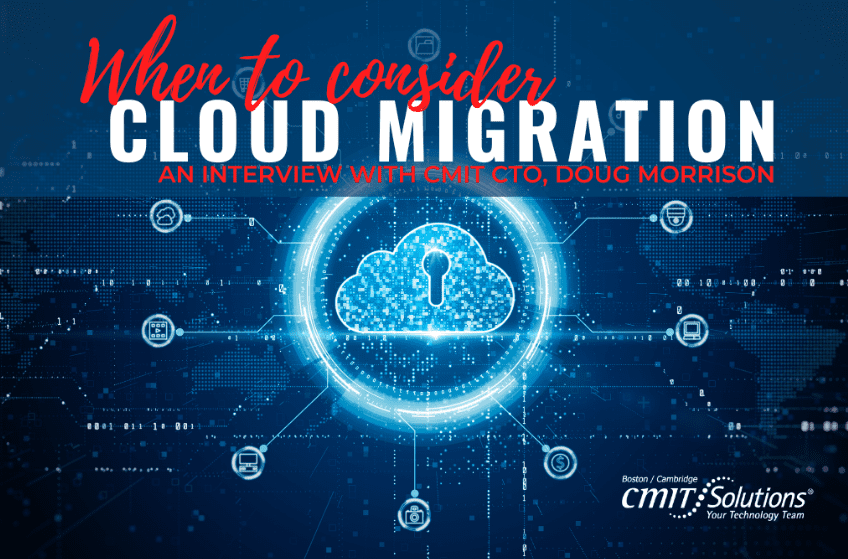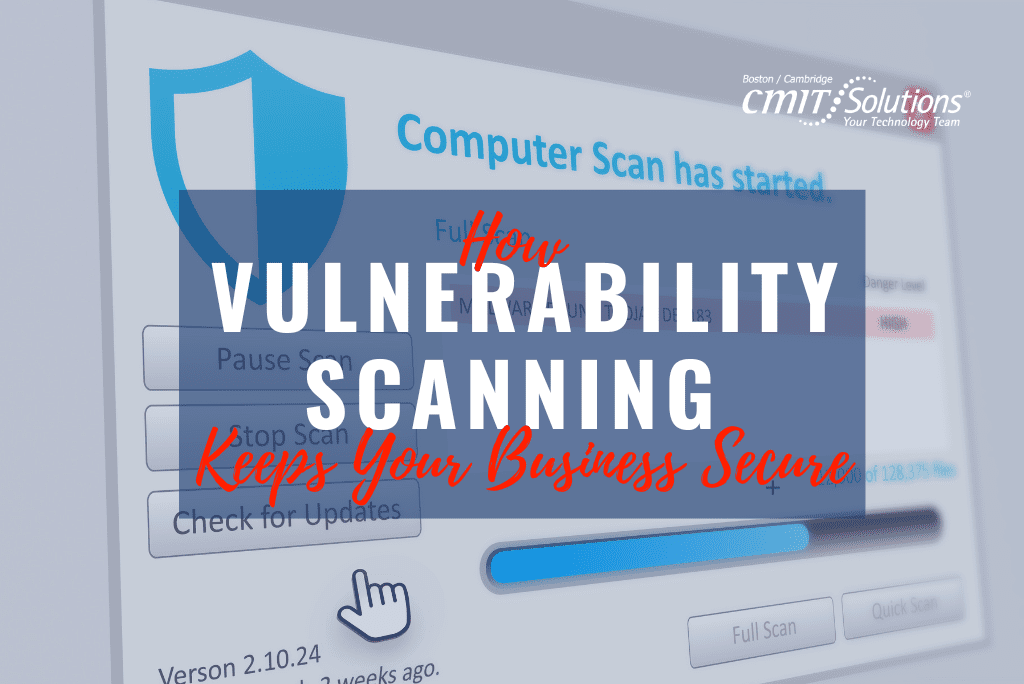When To Consider Cloud Migration – An Interview with our CTO, Doug Morrison
Everyone seems to be talking about the cloud and cloud migration. Considering the average employee uses 36 cloud-based services every day – does it make sense to transition your business operations into it? Cloud migration is the process of moving data, applications or other digital business elements from a legacy infrastructure to a cloud computing environment. Our Chief Technology Officer, Doug Morrison, shares his insights on when companies should consider cloud migration, along with the benefits and challenges they might face.
Q: WHAT ARE THE BENEFITS TO MOVING TO THE CLOUD?
DM: There are many potential benefits of moving to the cloud, but the primary benefits to small and medium sized businesses are the flexibility, potential cost savings, and not having to maintain on-premises server hardware. Many companies also appreciate the consistent, operational billing of the cloud verse the recurring capital investment of on-premises hardware and software.
Q: WHAT ARE THE MOST IMPORTANT THINGS TO CONSIDER BEFORE MIGRATION TO THE CLOUD?
DM: There are so many options in cloud computing that it’s important to start with a plan. Migrating your servers as-is to the cloud is relatively easy but won’t fully take advantage of what the cloud has to offer. Using Software as a Service (SaaS) offerings, such as Office 365, Google Workspace and Salesforce, in the cloud can reduce or eliminate the need for servers.
Q: WHAT ARE THE KEY CONSIDERATIONS THAT SHOULD BE TAKEN INTO ACCOUNT WHEN SELECTING A CLOUD PROVIDER?
DM: The first consideration when selecting a cloud provider needs to be security and understanding who’s responsible for protecting your data. The Shared Responsibility Model outlines how cloud service providers and customers share responsibility for the total security of your data in the cloud. It’s important to understand, implement, and monitor the security tools made available by the cloud provider to ensure your data is only being accessed by authorized users.
Q: WHAT TYPE OF PROJECTS HAVE YOU WORKED ON TO MIGRATE TO THE CLOUD?
DM: With the nearly limitless options the cloud provides, the migration projects are of all sizes and shapes. A small project may be moving from an on-premises version of an accounting software package to the vendor’s cloud offering. Migrating email to the cloud is a project we’ve done many times as those services have matured in reliability and popularity over the past decade. We’ve helped clients move their entire server infrastructure to the cloud, so they no longer have a server room in their office. We’ve also helped clients eliminate their servers and move all their resources to Software as a Service (SaaS) offerings.
Q: WHAT DOES A TYPICAL CLOUD MIGRATION USUALLY CONSIST OF?
DM: A typical cloud migration will start with defining the scope of what is to be migrated. After assessing the data to be migrated and what the user requirements are, a cloud provider can be selected. It’s important to prepare users for any changes in behavior or experience as early in the process as possible, so there’s often a proof of concept or testing phase. There’s then typically a cutover where the cloud data becomes production, and the on-premises data gets archived. Supporting users after the cutover is critical to ensuring a smooth transition.
Q: WHAT ARE COMMON CLOUD MIGRATION CHALLENGES?
DM: Most cloud migration challenges we’ve encountered have involved changes to the user experience. Based mostly on the underlying network protocols in use, some applications exhibit performance issues when moving data to the cloud. There are various options we’ve employed to publish the application front-end close to the data while providing the user a remote experience similar to having the application on-premises.
THE NEXT MOVE IS YOURS
The transition from legacy software to cloud adoption are logical steps to safeguard your business. As more small and medium sized businesses make the shift to the cloud, it becomes a must-have investment for business continuity. Interested in making the move or have questions about cloud migration? We would be happy to help. Please contact us directly at 781-350-3438.
Written by: Doug Morrison | @CMITBostonCambridge





